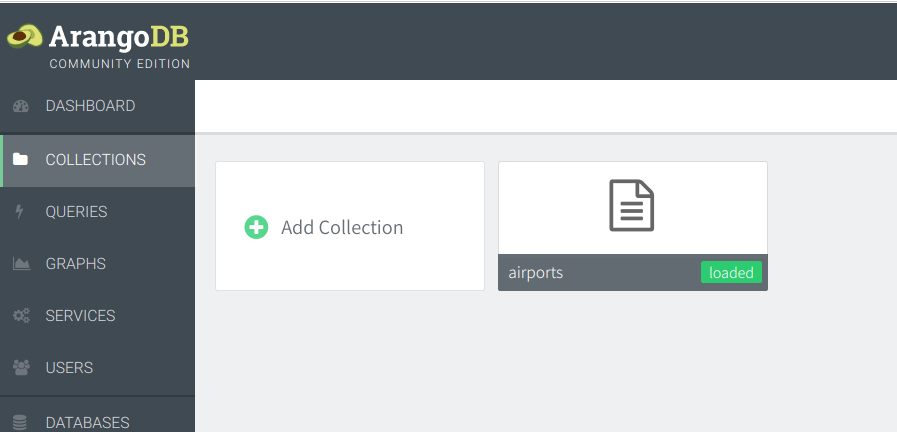

For some time already, these tools have also been using Docker more and more. Nowadays, CI (continuous integration) is seen everywhere, and there are enough tools to support it. We live in a time where everyone knows how important testing is. But there are other cases where you can reach a technical limit with a WebUI, for example, keyword automation.

This is also more effective in most cases.
#ARANGODB UI CODE#
In addition, it is possible to generate boilerplate code for routers or scripts to your already existing local Foxx service.Ĭreate a router with crud operations for a given collectionĪs already mentioned, many developers who work regularly with a terminal, prefer to type in their commands and are reluctant to clickclick themselves through a graphical UI. This command comes with two additional options which allow you to create your basic service resources based on specific user input or just create an example service.Ĭreate a minimal service in your current working directory

#ARANGODB UI HOW TO#
Here everyone can work out for themselves the optimal procedure how to use the CLI.Īfter the initial release 1.0 we have extended the Foxx CLI with the command init, which allows you to bootstrap your Foxx service. In order to optimally support the workflow of a developer, it is of course also possible to switch on the development mode via the Foxx-CLI or to replace the installed service with your local files by a single command.
#ARANGODB UI INSTALL#
By the way, we can install already bundled (zipped) services or specify a URL and download & install the service from there. For this we first switch to the directory of our Foxx service, where our manifest.json is located, and call the Foxx-CLI with the desired mountpoint, under which our service should be installed and accessible: Let's take a look at the most essential functionality - installing a Foxx service. You can learn more about the different commands Foxx supports by using the -help flag. After you've installed the Foxx-CLI, you should be able to use the Foxx program. Since the Foxx-CLI is a node module, it is dead-easy to install it by using npm or yarn. If you have any question, join our #foxx channel in our Slack Community.įor those who are already in love with Foxx, let's get started with the new CLI. Check out our Getting Started tutorial and come back here if you've written your first little Foxx service and would like to try it out in your running ArangoDB instance.

No, seriously, you should really give it a try. That's why we decided to develop a node-based CLI tool to manage Foxx services, called Foxx-CLI, which we already released in version 1.1.įor all readers who have not tried Foxx until now, shame on you. Furthermore, this procedure is almost impossible to use in an automated deployment process. However, we developers always want to become more productive and clicking through a graphical UI is not the best way. This is not a big deal and can easily be done through ArangoDB's WebUI. The User can then choose to remove it from the list.Anyone who has ever worked with our JavaScript framework Foxx was faced at some point with the challenge to install its Foxx service in its current ArangoDB instance or to replace the installed service with local code changes.
#ARANGODB UI PASSWORD#
If the root password is not provided in the config.yaml, then the root password will be auto-generated and will be shown in the status of the charm. This charm installs andĭeploy the ArangoDB charm with the following: juju deploy cs:~tengu-team/arangodb-1 ArangoDB is a native multi-model, open-source database with flexibleĭata models for documents, graphs, and key-values.


 0 kommentar(er)
0 kommentar(er)
